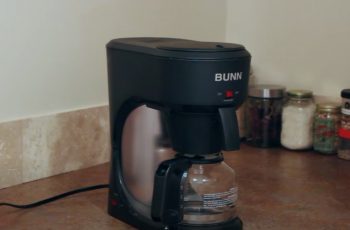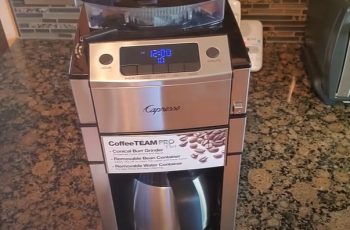It’s wise to routinely clean your coffee maker thoroughly. Although baking soda might be effective for removing stains and has a pleasant scent, it’s not recommended for use inside your coffee maker. You can only use baking soda if it’s completely dissolved in water and the solution is quite diluted.
How Baking Soda Helps To Clean A Drip Coffee Maker
Baking soda is a versatile cleaning agent that can be used to clean the kitchen and its equipment. Some common cleaning uses for baking soda are listed below.
-
Removes Stains Well
It is easy to shine and clean kitchen countertops using baking soda, just as it is easy to clean the interior of your coffee maker. It is not abrasive, so baking soda will not scratch surfaces. You will see how well dirt comes off the surface if you sprinkle baking soda on it and scrub it with a brush. Although the interior of a coffee maker is not usually affected by stains, this could be useful for a drip cone or water reservoir with stubborn stains.
-
A Pleasantly Scented Deodorizer
It is not unusual for odors to accumulate in a household due to high activity levels, resulting in undesirable odors on your curtains, rags, and surfaces as well as in your coffee maker. If you want, you can apply baking soda to anything and leave it for 15 minutes. As soon as you clean them up, they smell better. Baking soda deodorizes a coffee maker in the same way.
-
Exceptional For Removing Grease
A kitchen’s steam circulates all around, spreading grease and odor which can stick to the walls. It is also likely that the coffee maker next to the stove may slowly collect deposits of grease that vinegar struggles to dissolve because of its acidity. A baking soda solution can help remove the build-up due to its alkaline properties.
Although baking soda has many uses in cleaning, it does not dissolve hard water deposits or remove mineral deposits. This is due to baking soda’s alkaline nature. Descalers need acidity to dissolve things like this, so baking soda is not a good choice.
Is Baking Soda Effective In Cleaning An Entire Coffee Maker
Cleaning your coffee maker with baking soda will remove stains from the exterior, as well as the carafe and any stains that may have formed there. If you haven’t descaled your coffee maker in a long time or if you have never descaled it, I would not recommend running it with the baking soda solution.
A Cleaning Procedure with Baking Soda for Your Coffee Maker
Baking soda is a great way to keep dirty equipment and kitchens clean. Baking soda should be used in the same way as vinegar to clean a coffee maker. It is important to note, however, that baking soda will not descale your coffee maker. Following is a guide on how to clean your coffee maker with baking soda.
Step 1. Remove the coffee maker’s filter and set it aside.
Step 2. In the carafe, pour one cup of lukewarm water.
Step 3. To the carafe, add ¼ cup of baking soda and stir until dissolved. If you use lukewarm water, the baking soda will dissolve more quickly and lumps will be prevented.
Step 4. Into the water reservoir, pour the baking soda solution.
Step 5. You should now place the carafe back onto the warming plate.
Step 6. To begin brewing, activate the “Brew” button.
Step 7. Once the brewing process is complete, throw away the used baking soda mixture.
Step 8. Brew a new batch with fresh water in the reservoir. Usually, it takes two brewing cycles for a coffee maker to be completely cleaned. The water must return to the carafe as clean as it went in. This means it has been cleaned thoroughly.
Descalers Should Never Be Made From Baking Soda
While baking soda provides great stain-removing benefits, it is not a good option for use with a water cycle. This can clog most coffee makers, particularly those with mineral deposits in the water lines.
Baking soda works wonders for removing stains and odors. The right descaler, such as vinegar, will dissolve calcium deposits, limescale, and other calcification inside the water tubing.
However, even if baking soda doesn’t clog the intake, you’ll have mineral deposits in the system that need to be removed in a separate cleaning cycle.
Conclusion
Regular cleaning is necessary, such as once or twice a month, depending on how often you use your coffee maker. You need to make sure that you clean your coffee maker as quickly and effectively as possible without damaging it. With baking soda, the process is more complicated, and damage to your coffee maker is possible. Those of us with high-end coffee makers don’t want to risk clogging.


